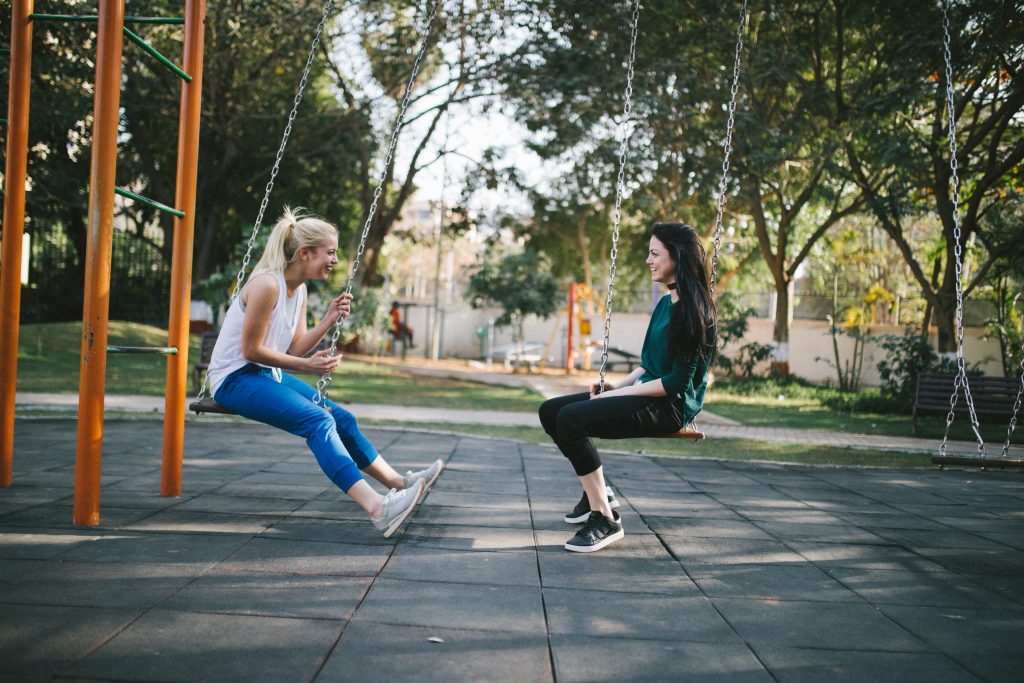My Teen Doesn’t Have A Lot of Friends – Should I Be Concerned?
I’ve had parents mention some concern about their teens only having 1 – 2 friends… Is this something to be concerned or worried about?
Having friends and changes in friendships are a very normal process for teens and their identity development – at different times we all have different people in our lives. Teens are going through that process right now, figuring out what type of people they want in their lives.
There are some factors that may lean your teen towards wanting a small friend group. For example, if they are a little more introverted – or have introverted qualities – or maybe they feel most connected in close, intimate relationships.
I remember my middle school self – I got along well with a lot of my peers, but I really just had this one friend – she and I spent a ton of time together. She had this electric keyboard and we would hang out all weekend and write parody songs together. We had a blast! I just had the one close friend, really. And that was great for me.
So I think it depends on where your teen is at with having just one to two friends. If those two friendships are really close, good friendships, that makes a big difference.

Photo by Ana Municio on Unsplash
Questions to Ask
Here are a few questions you can ask yourself when it comes to your teen’s friendships:
- Does our teen enjoy spending time with their friend(s)?
- Is your teen saying or are you noticing behaviours indicating they may want more friends?
- Do they seem satisficed with their friend groups?
Whether your teen has lots of friends or just a few, there are other elements that are more important.
Other Things At Play
It’s important to recognize if this is a preference thing, or if there is something else at play.
Does your teen need to work on social skills? Confidence?
Consider how this might be getting in their way of making friends. If these skills are missing or underdeveloped, it can be really challenging for teens to make or keep friends.
It is important not to assume here. Ask your teen about their friend group – get to know how they see their friendships and what they value about them. In lending a curious ear, you may learn more about whether this is a preference, or their way of bei
ng, or if there are underlying difficulties or challenges that are preventing them from making more friends? If you discover your teen is really shy and strugglin
g to with talking to others, check out this blog I wrote just for them: How to Get Past The Shy: 4 Conversation Tips for Teens.
Something to Think About
One thing to consider is asking yourself if your concern is something that is coming from a projection of your experience growing up, or something you experienced as a teen. It can be helpful to practice a little self-reflection on your own friendships growing up and how that might impact the way you view your teen’s friendships. It might also lend itself to having empathy for your teen’s friendship woes as they come up. What were your friendships like? What were some things that were difficult with relationships?
Check-in with yourself and see if there’s a bit of parallel with your own experiences when you were younger.
Love,
Chantal
If you found this post helpful, pass it on by emailing a friend or sharing it on Twitter or Facebook – thank you!
Chantal Côté, R.Psych, Pyramid Psychology – helping older children, teens, and young adults learn how to build bulletproof mindsets.
To connect, send an email to info@pyramidpsychology.com






 lately? What did you like best about the book we read in class? How did you figure out the assignment today?
lately? What did you like best about the book we read in class? How did you figure out the assignment today?




 Chantal Côté (she/her) is a psychologist and teen life coach living in Calgary, Alberta. After over a decade in non-profit and community mental health, Chantal started
Chantal Côté (she/her) is a psychologist and teen life coach living in Calgary, Alberta. After over a decade in non-profit and community mental health, Chantal started 



























